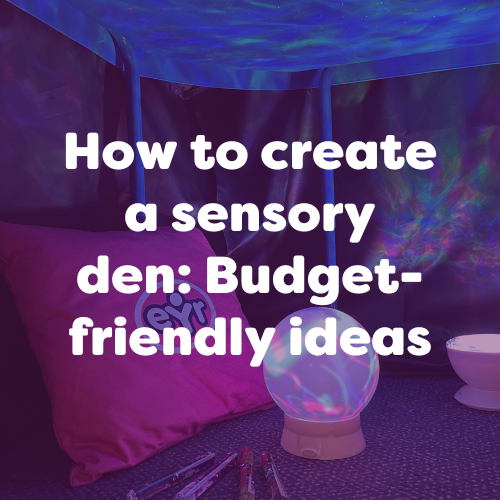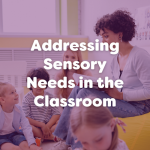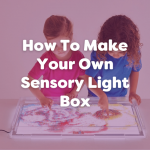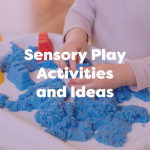For children of all ages and abilities, sensory rooms and gardens offer a variety of benefits through immersive multi-sensory environments. These specially designed therapeutic spaces are typically housed in purpose-built rooms and allow children with sensory impairments and processing disorders to experience focused sensory input.
Budget-friendly dens can be low-cost alternatives that offer the same wellness benefits while being easier to access.
What is a sensory den?
Sensory dens are small areas that can be used as an effective alternatives sensory rooms. This can be ideal for those on a budget or with limited space to commit to a dedicated room filled with equipment and activities.
An key advantage to creating smaller, space-saving dens is that they can be set up wherever there is space available: at home, school, or even outdoors. These flexible spaces can easily be built, moved or packed away when needed but still provide a dedicated area for children to initiate how they use their space.
What are the benefits of sensory spaces for children?
Specially designed rooms offer a safe space for children to self-regulate and manage sensory input. These controlled environments can also become de-escalation areas and work well as spaces to retreat to if original environments present triggers or become overwhelming.
These spaces are especially beneficial for children who struggle to process sensory information and who have additional needs or communication difficulties. Multisensory environments can help with sensory integration and give a welcome break from harsh lights and distressing noises.

Why create a sensory den?
Whether in the classroom or at home, a personalised and immersive space can help to reduce stress and motivate learning. By providing easy access to these safe spaces children can reset their emotions and have the opportunity to avoid aggression and seek out healthy coping strategies.
Sensory dens are areas to bond and spend time together. Creating these multi-sensory environments can offer important life-skill developments, language development and cognitive growth.
Things to consider
1. Interests – Transforming a small area with limited space means having to carefully select which items to include. Sensory boxes and baskets are inexpensive additions that can be personalised and created within a budget. Fill with fidget toys and tactile items and pack away when done!
2. Aids – For children with visual impairments, tactile elements can be included to help children confidently explore their senses. Vivid lights, contrasting colours and interesting sounds can also help to create a more inclusive environment.
Fibre lamps and glitter balls are simple, low-cost additions that can help to set the mood. Try adding fairy lights to explore coloured lights and patterns.
3. Location – Quiet spaces can be ideal but not always possible to find. Ear defenders can provide proprioceptive (deep pressure) and tactile (touch) input. Alternatively, headphones with calming music may be preferred to block out over-stimulating inputs.
Need some inspiration?
Every child has different needs so take some time to adjust the space as needed. Keeping things simple and repurposing household items can be a great way to make the most out of objects at hand.
Consider sight, sound and touch when looking at objects to include and try variations of colour and texture to see what works best to support stimulation and emotional exploration. For children with sensory or communication difficulties, consider providing picture exchange cards (PECS) as a means to indicate how they would like to interact with their space.
Need some ideas? Try these:
- Save textures paper or fabric scraps to create a tactile wall to explore
- Create a squish bag using Playdoh or clay
- Add a balance board for movement options
- Heavy blankets and stuffed animals to offer the comfort of weighted objects
- Use a small paddling pool or a basket to make a mini ball pit
For further ideas on what to add to your den, take a look at our range of Sensory Play Equipment and Resources









